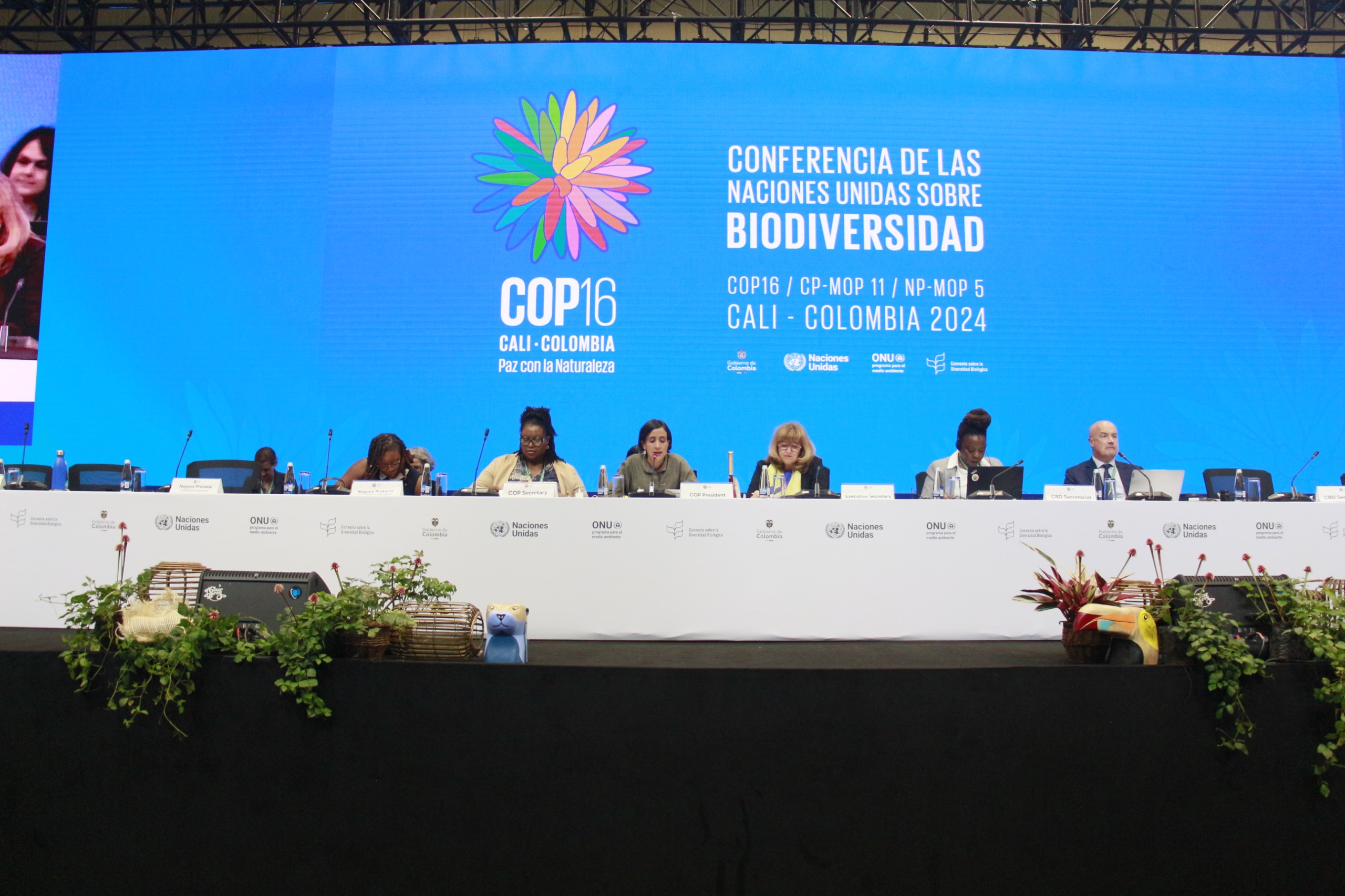Youth and Lawyers at COP 16: Addressing the Global Biodiversity Crisis

Michael Girum
Allard JD 2027
Dec 11, 2024
I recently had a rare opportunity to witness the cut and thrust of international environmental diplomacy up close and personal as a youth delegate on Canada’s official delegation to the global biodiversity conference in Cali, Colombia.
The Convention on Biological Diversity
While climate conferences, such as COP 29 recently held in Baku, Azerbaijan, often dominate headlines, the biennial Conferences of the Parties (COPs) under the Convention on Biological Diversity (CBD) address the equally urgent issue of biodiversity loss. These meetings provide a critical platform for fostering international cooperation to address the degradation of ecosystems and species.
Biodiversity is foundational to global systems, underpinning food security, water availability, and climate regulation. Its protection is essential for long-term ecological and economic stability.
COP 16, held this year in Cali, Colombia, focused on advancing the Kunming-Montreal Global Biodiversity Framework (KMGBF) adopted at COP 15 in 2022. Among its notable achievements was the establishment of the Cali Fund, a mechanism for benefit-sharing related to genetic materials sourced from natural ecosystems. This represents a significant step toward equitable and accessible use of these resources.

Another major outcome was the historic decision to formalize the inclusion of Indigenous voices in biodiversity governance through the creation of a subsidiary body dedicated to Indigenous participation in future decisions. This development acknowledges the essential role Indigenous communities play in stewarding the world’s biodiversity and recognizes the importance of traditional knowledge systems in preserving ecosystems and combating climate change.
Despite these advances, COP 16 highlighted persistent gaps, including insufficient commitments to biodiversity financing and challenges in domestic implementation of the KMGBF.
COP 16’s mixed results demonstrate that ambition must be matched with implementation and robust financing, particularly from Global North countries and major corporations.
The Role of Youth in Biodiversity Negotiations
As a youth delegate on Canada’s official delegation to COP 16, I had the unique opportunity to witness the intersection of diplomacy, science and advocacy in real time. The inclusion of youth in these spaces is not merely symbolic; it reflects the reality that younger generations are disproportionately impacted by the biodiversity crisis.
Youth today face a future increasingly shaped by biodiversity loss, from reduced food security and ecosystem collapse to the erosion of cultural heritage tied to natural landscapes.
The Canadian government’s commitment to involving youth in its delegations reflects an understanding that empowering the next generation is critical for advancing ambition and cultivating skilled negotiators for the future. This approach ensures that young people gain invaluable exposure to the intricacies of multilateral negotiations, equipping them to navigate and influence complex global governance frameworks.
At COP 16, youth delegates were not passive observers but active contributors.
We engaged with policymakers, delivered interventions and collaborated with civil society to advocate for stronger commitments. This participation served not only to amplify the urgency of the biodiversity crisis but also to underscore that the outcomes of these negotiations will shape the environmental landscape for decades to come.

The Legal Profession’s Role in Biodiversity Conservation
One of the most compelling aspects of COP 16 was observing how legal mechanisms are integral to addressing biodiversity loss. The law serves as a powerful instrument for conservation, offering pathways to hold governments and corporations accountable, secure rights for ecosystems and communities, and institutionalize environmental protections.
Organizations such as Stop Ecocide are at the forefront of this effort, advocating for the recognition of ecocide as an international crime under the Rome Statute of the International Criminal Court. By criminalizing severe environmental destruction, this initiative aims to deter actions that threaten ecosystems on a catastrophic scale.
Similarly, the Earth Law Center works to embed the rights of nature into legal systems worldwide, recognizing ecosystems as entities with intrinsic rights to exist, flourish, and regenerate. This paradigm shift challenges anthropocentric legal frameworks and promotes a more harmonious relationship between humanity and the natural world. The Respect for All Relations research program, housed at UBC’s Centre for Law & the Environment, is exploring the implications of this paradigm shift.
Another critical organization is Landesa, which focuses on securing land rights for communities, particularly in biodiversity-rich regions. By empowering local populations with legal ownership and stewardship, Landesa fosters conservation solutions that align with the needs and aspirations of those most directly connected to the land.
These examples highlight the diverse and impactful ways law and lawyers contribute to biodiversity conservation. From drafting and enforcing international agreements to representing marginalized communities, lawyers play an indispensable role in crafting solutions to the biodiversity crisis.
A Call to Action for the Legal Community
The biodiversity crisis demands concerted action from all sectors of society, and the legal community is no exception.
Law students, academics and practitioners alike have a critical role to play in reversing biodiversity loss.
Law students can engage through environmental law clinics, moot court competitions and internships with conservation-focused organizations. Academics can advance research on emerging legal frameworks, such as ecocide law or rights of nature legislation, providing the intellectual foundation for transformative policy changes. Practising lawyers can advocate for stronger environmental regulations, support litigation against biodiversity offenders, and advise governments and NGOs on implementing robust conservation strategies.
COP 16 served as a reminder of both the challenges and opportunities inherent in addressing the biodiversity crisis. While progress was made, much work remains to be done to ensure the KMGBF’s targets are met and that future COPs build on the foundations laid in Colombia.
For legal professionals and aspiring lawyers, the biodiversity crisis represents a unique opportunity to leverage the law as a tool for safeguarding the planet’s ecological heritage. By embracing this challenge, the legal community can play a pivotal role in securing a sustainable future for all.
- Centre for Law and the Environment


